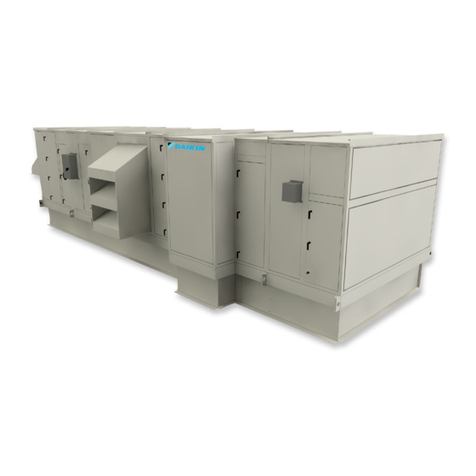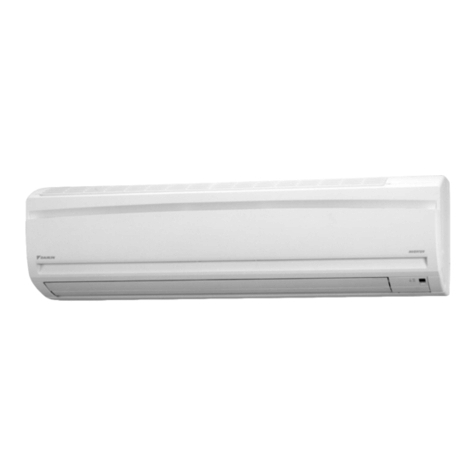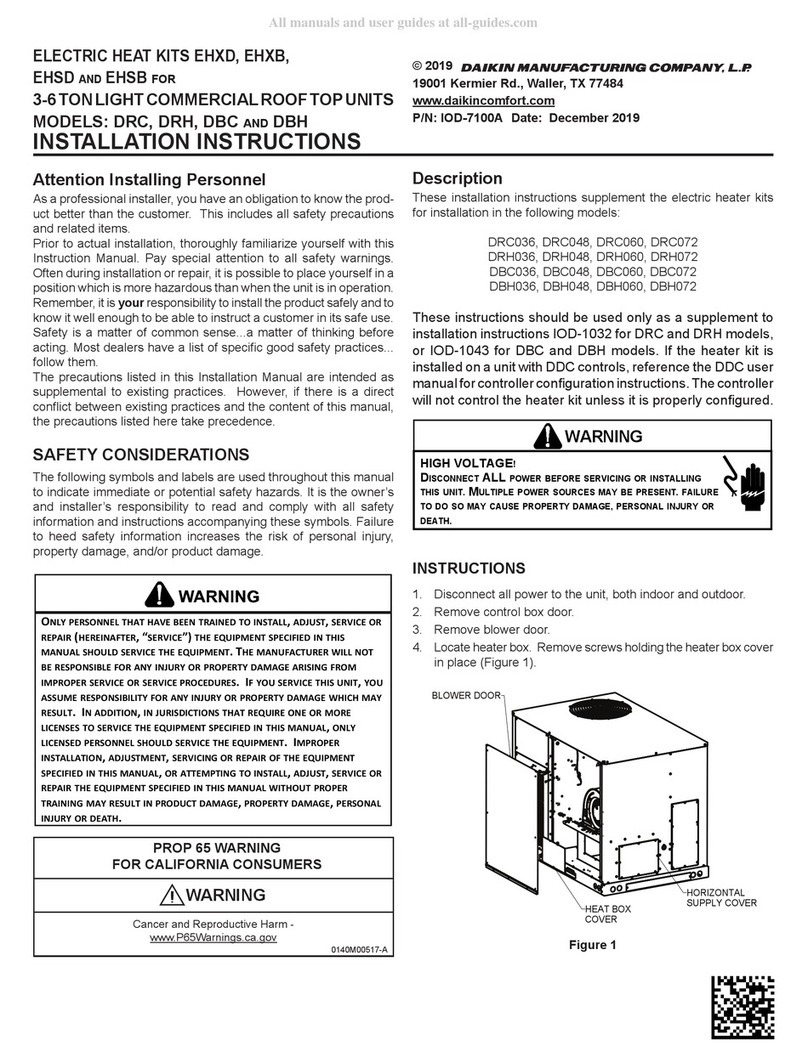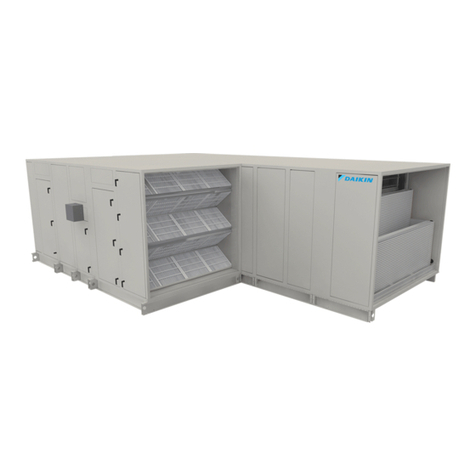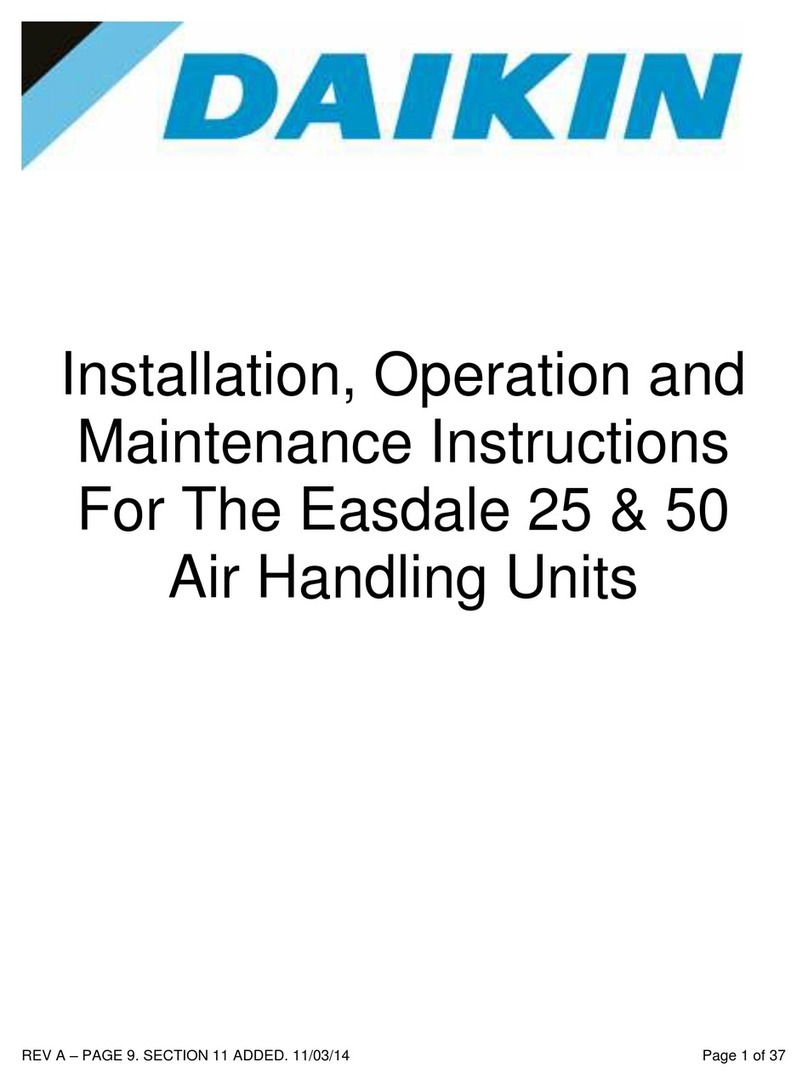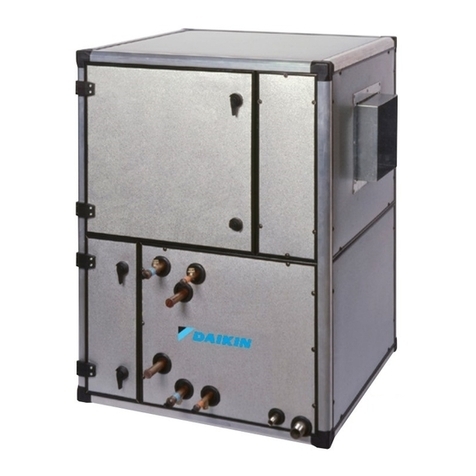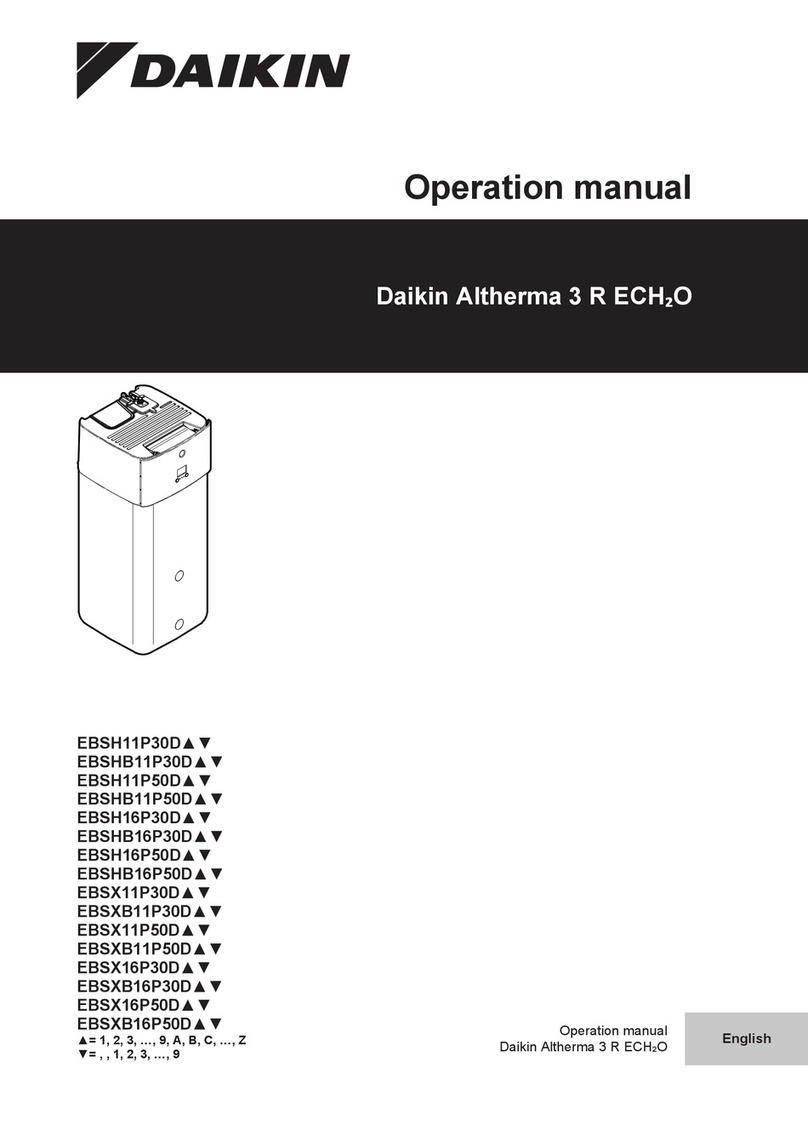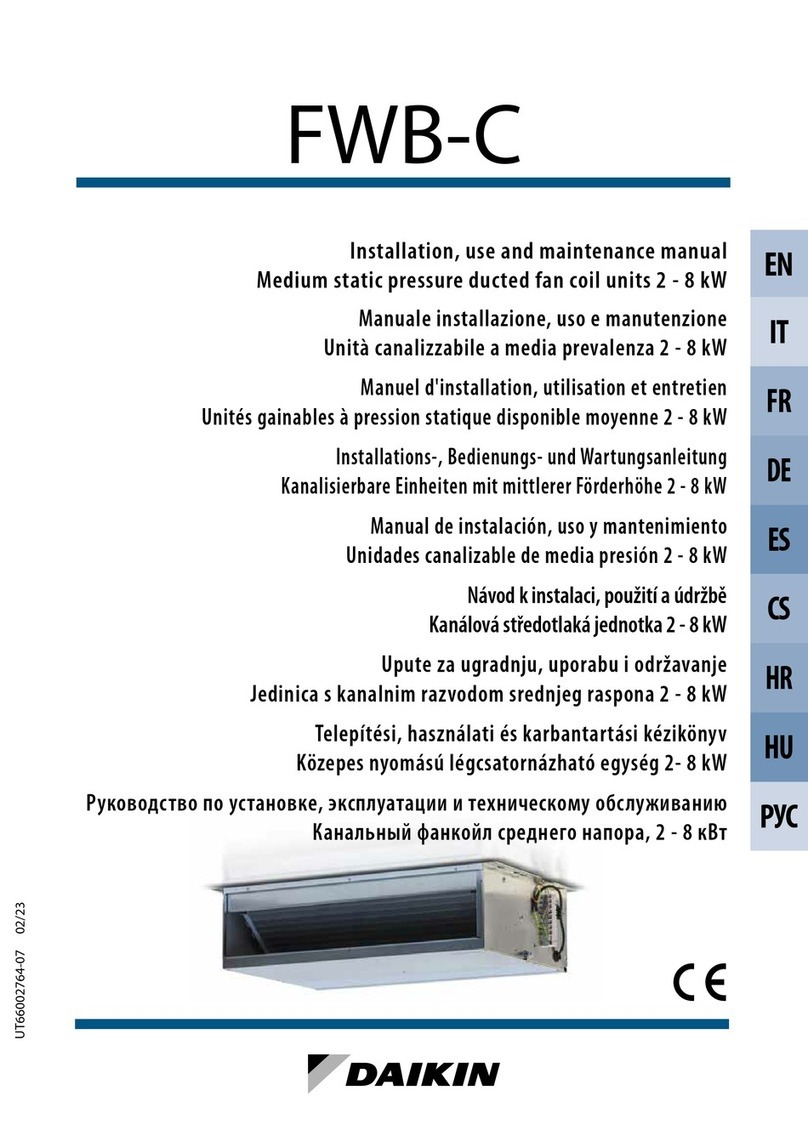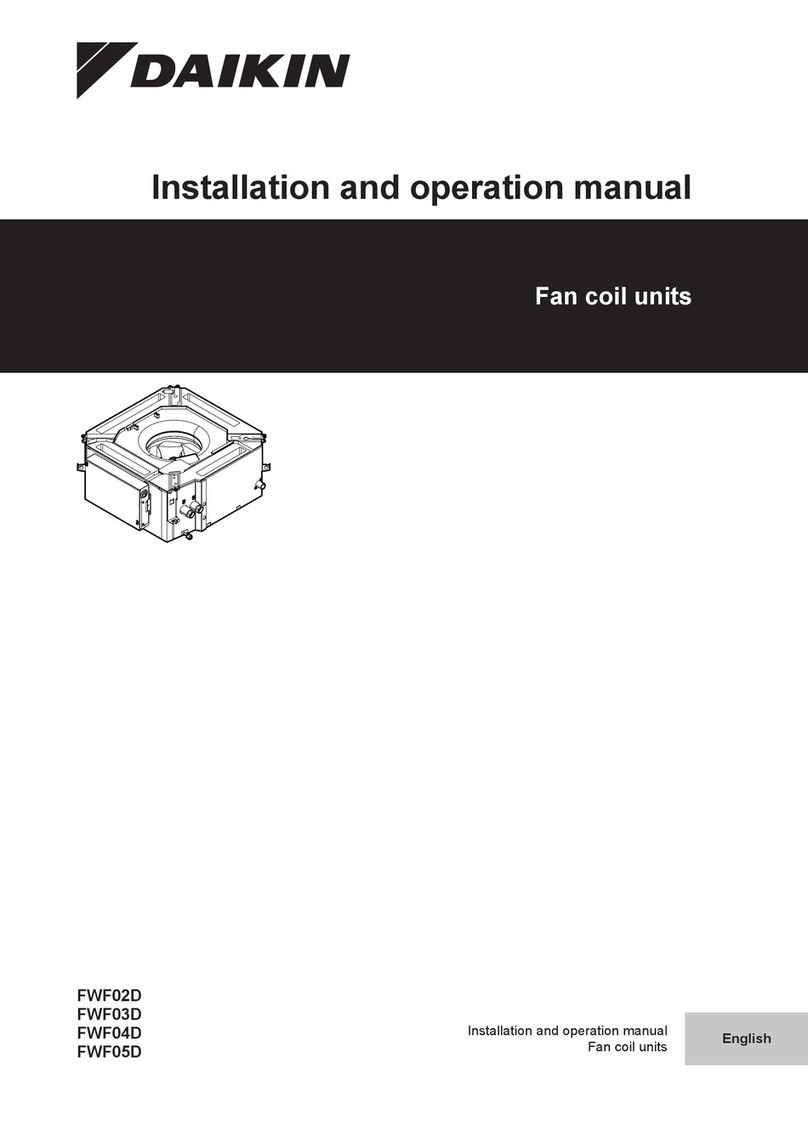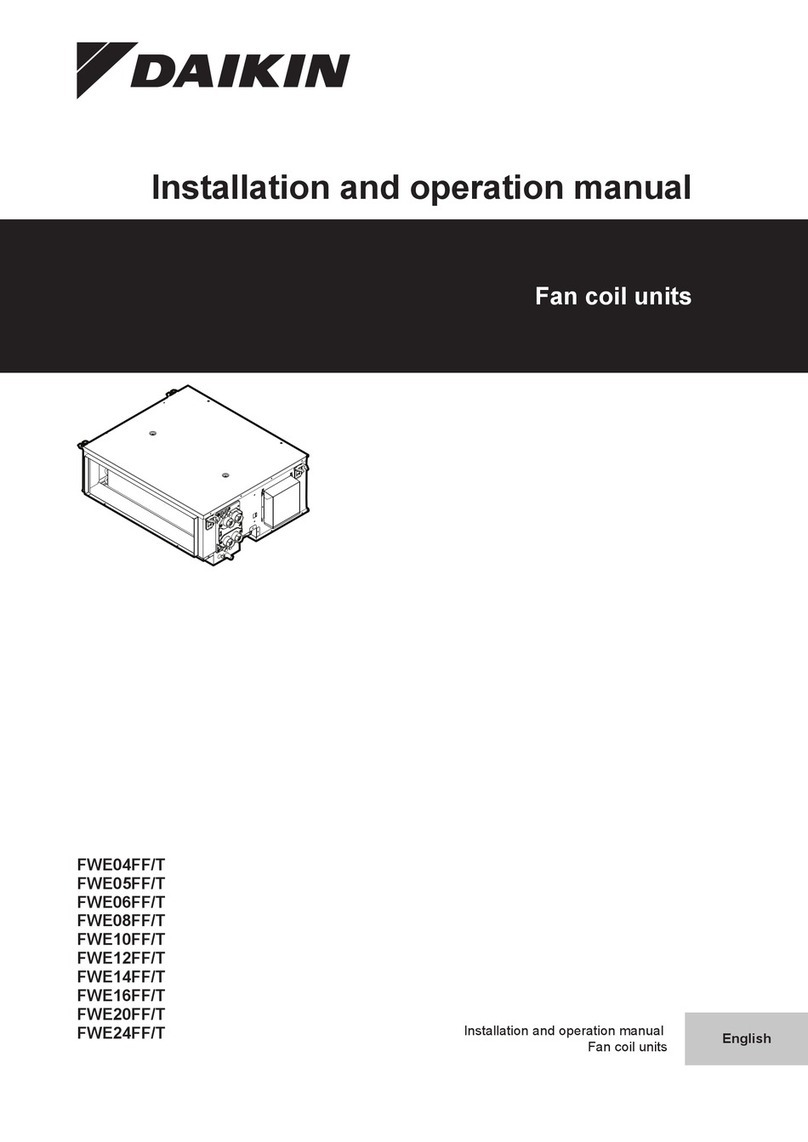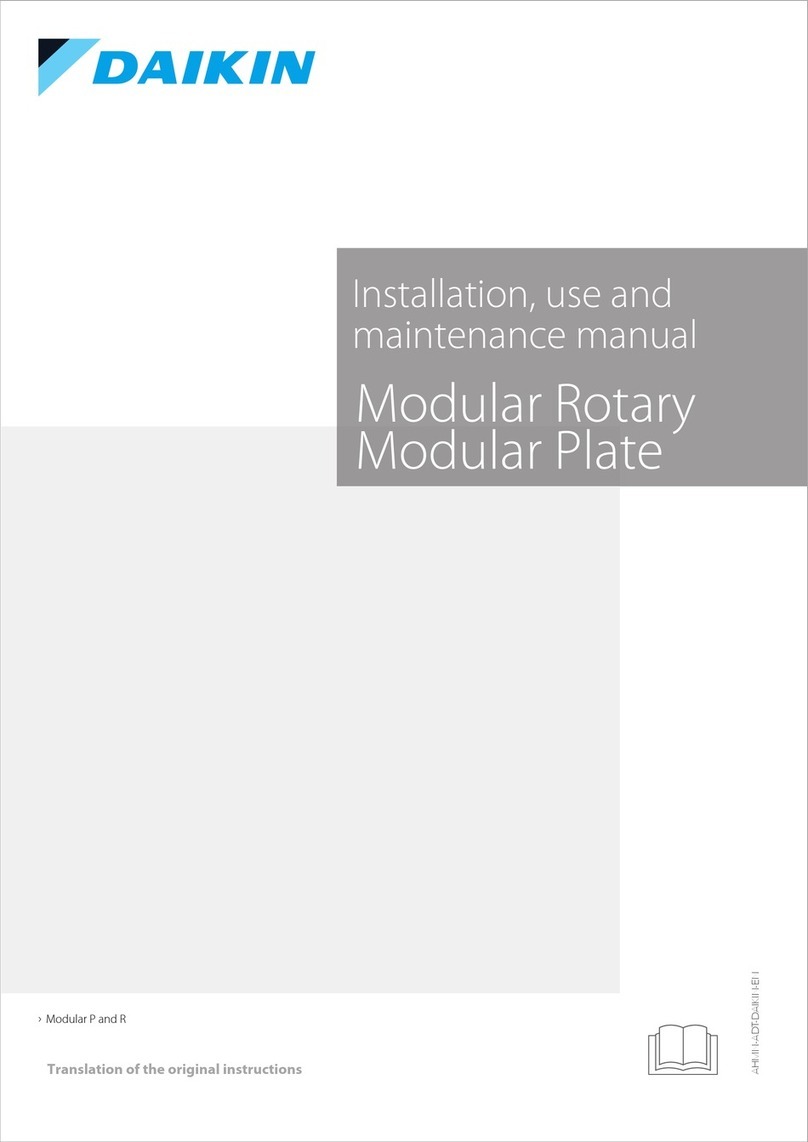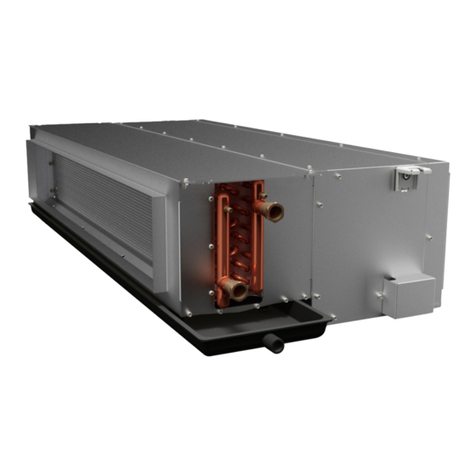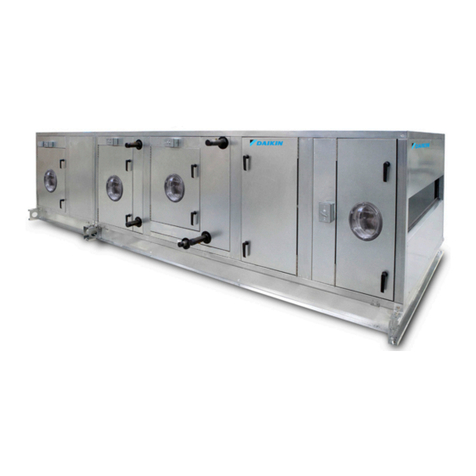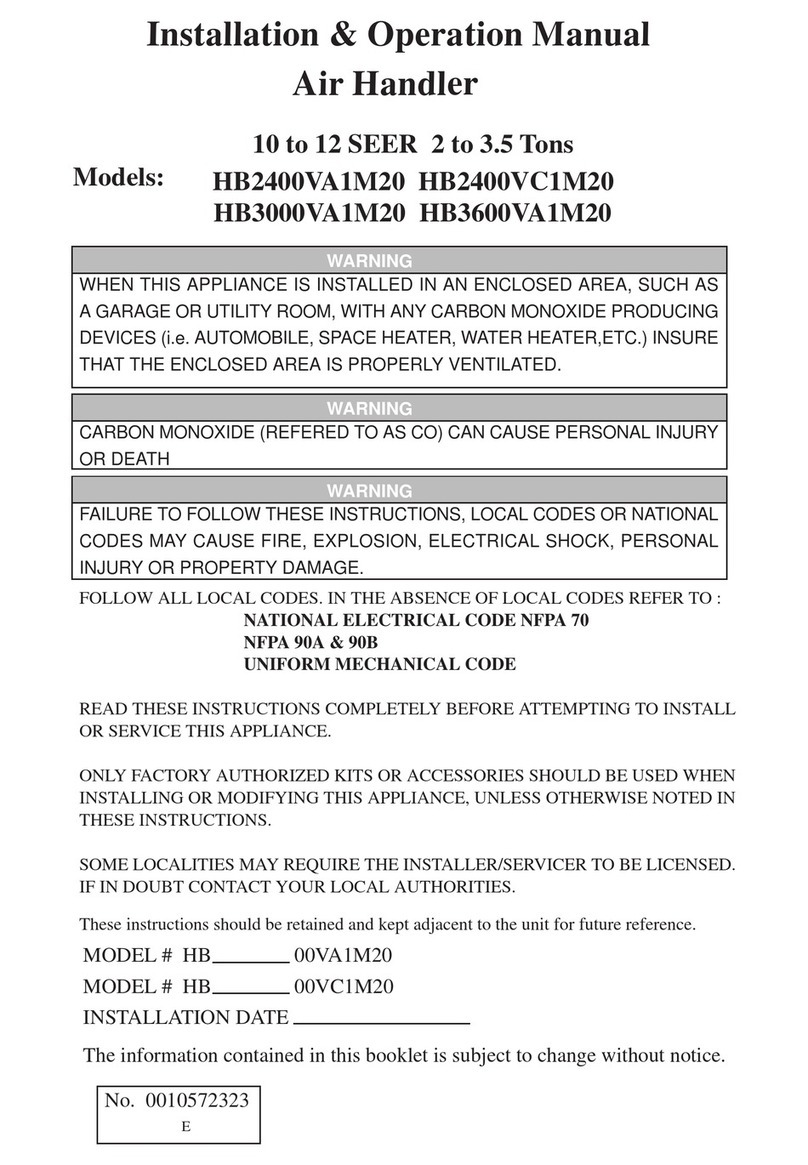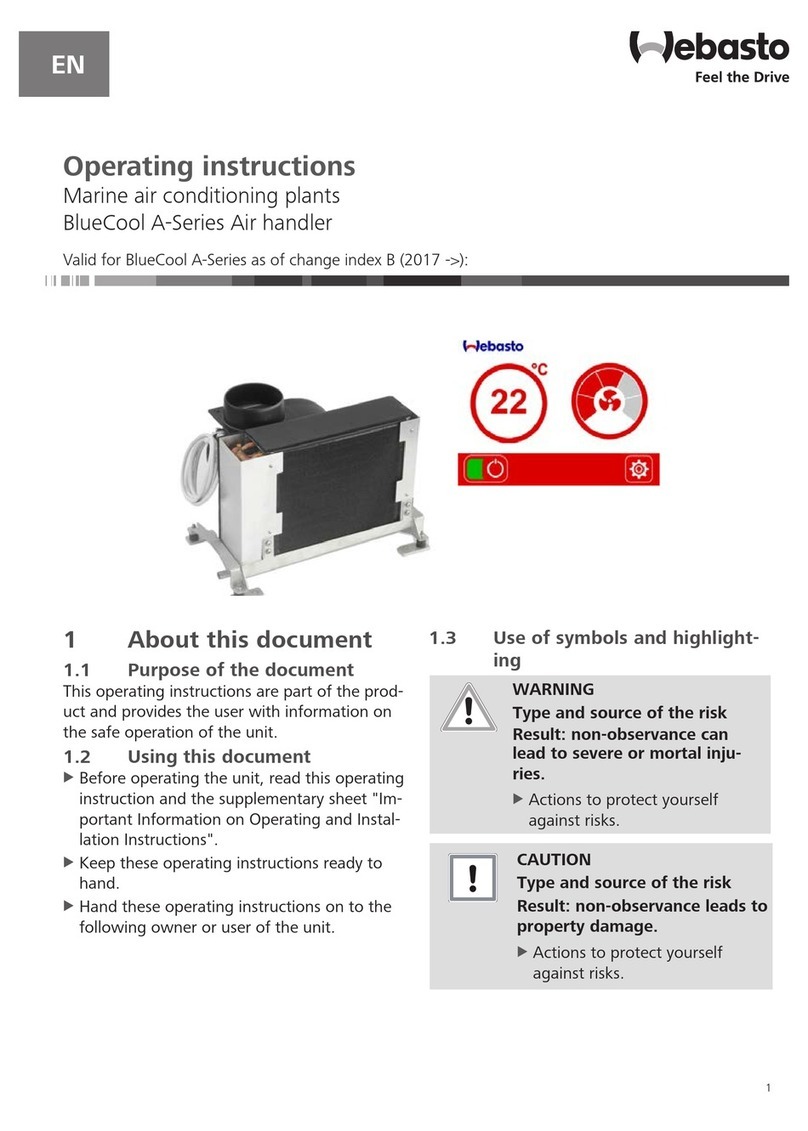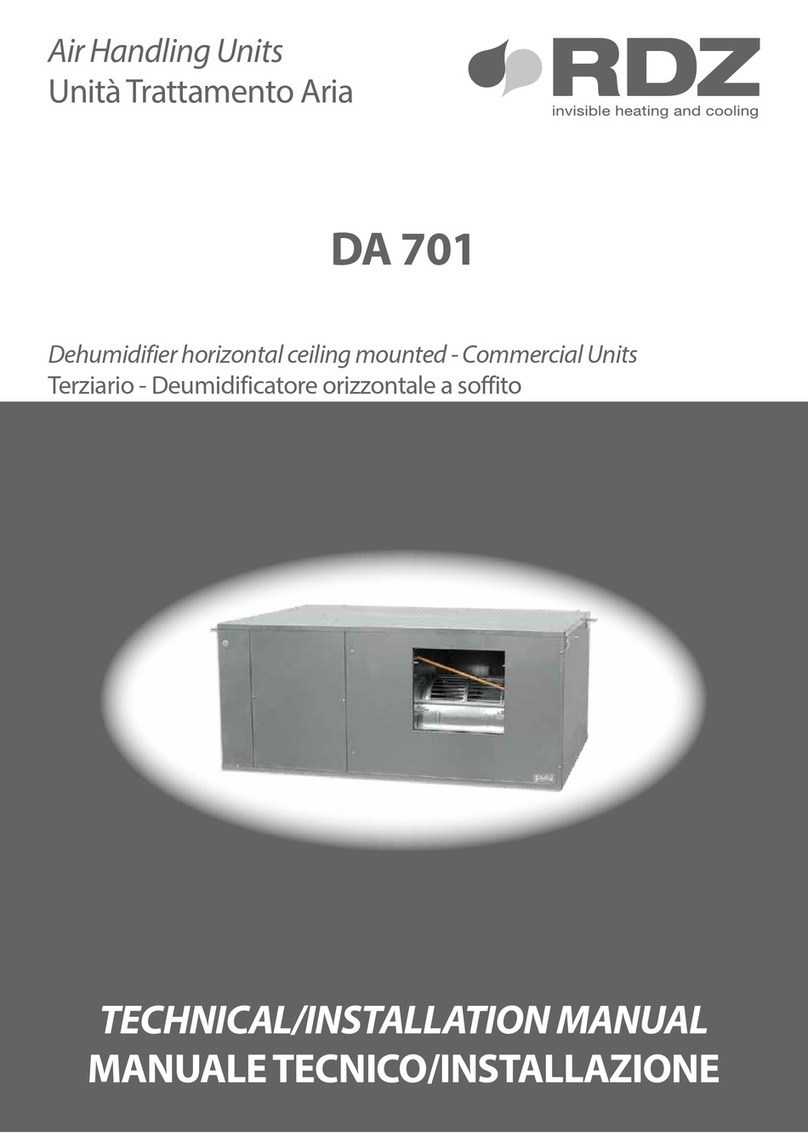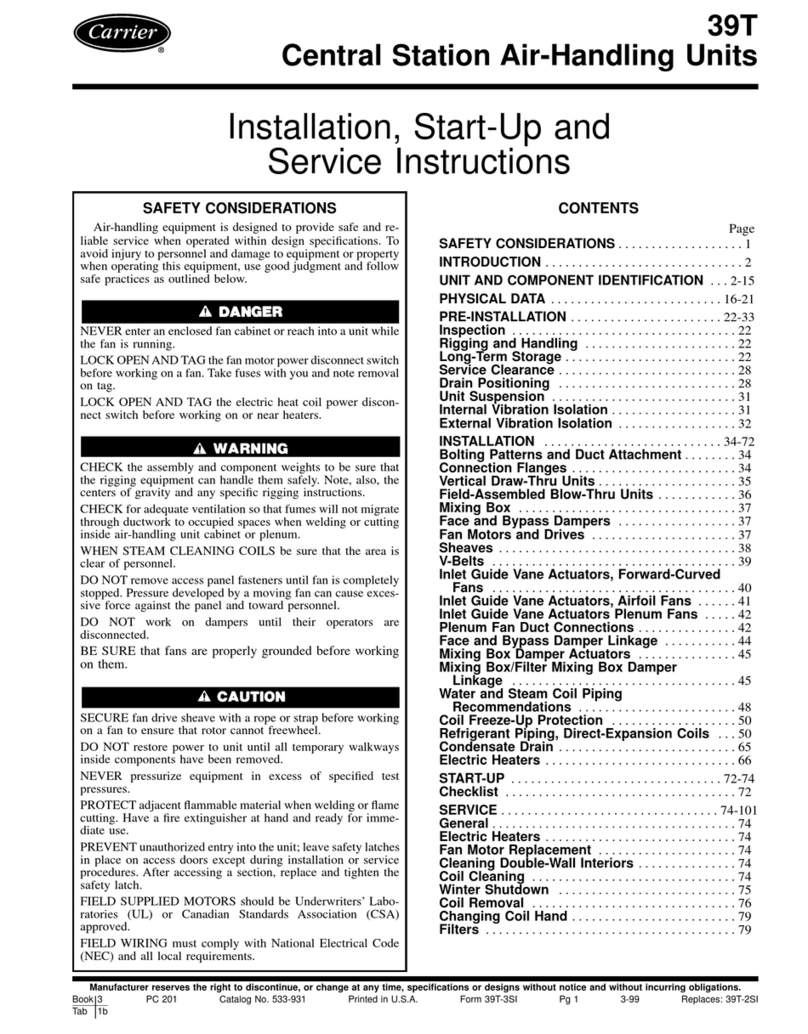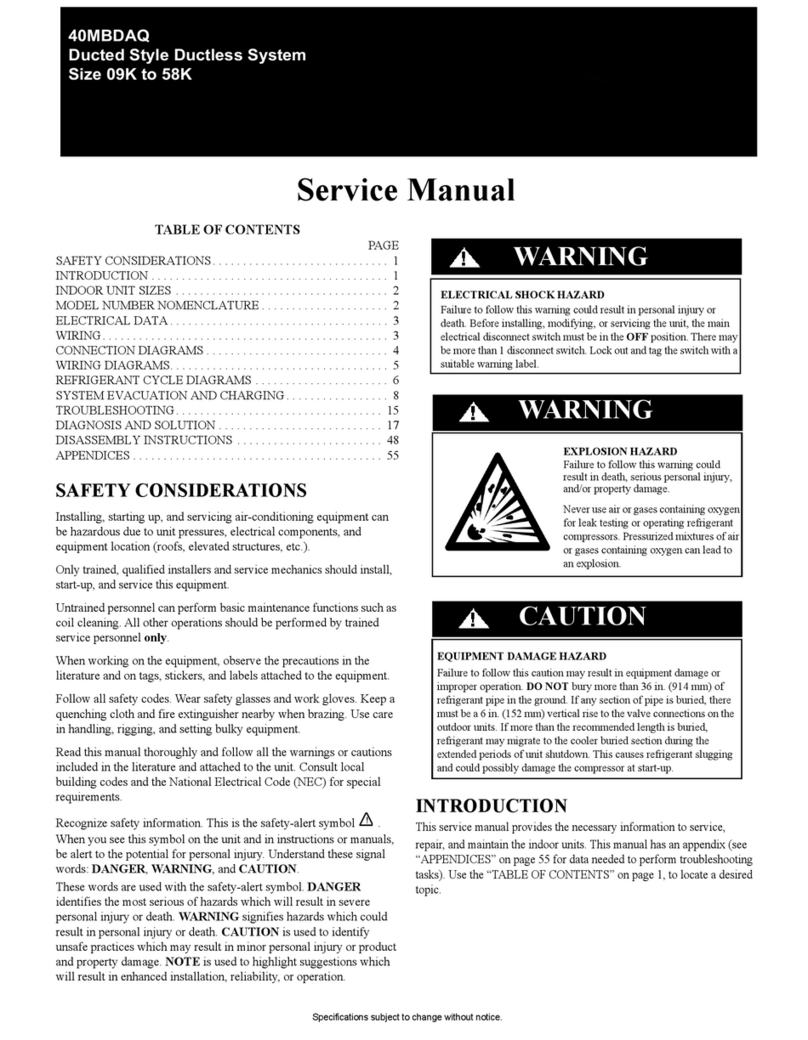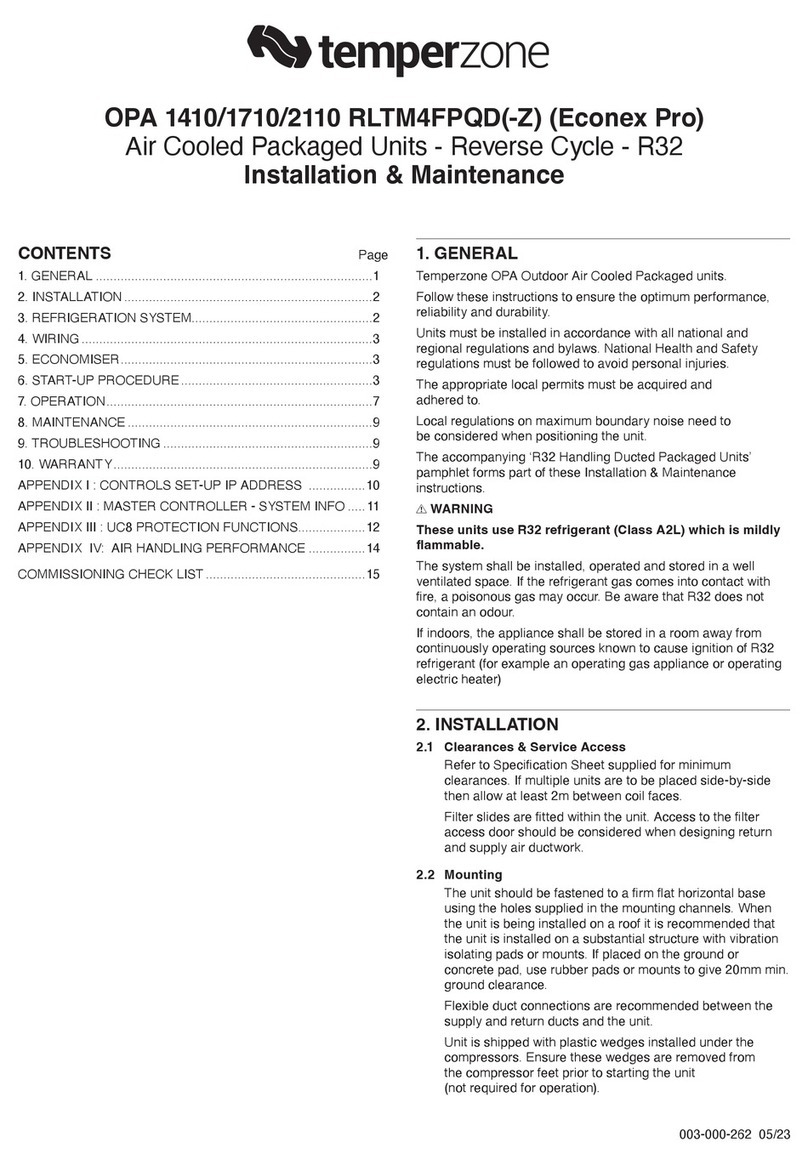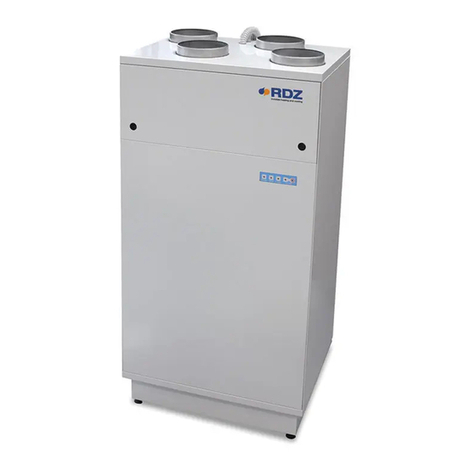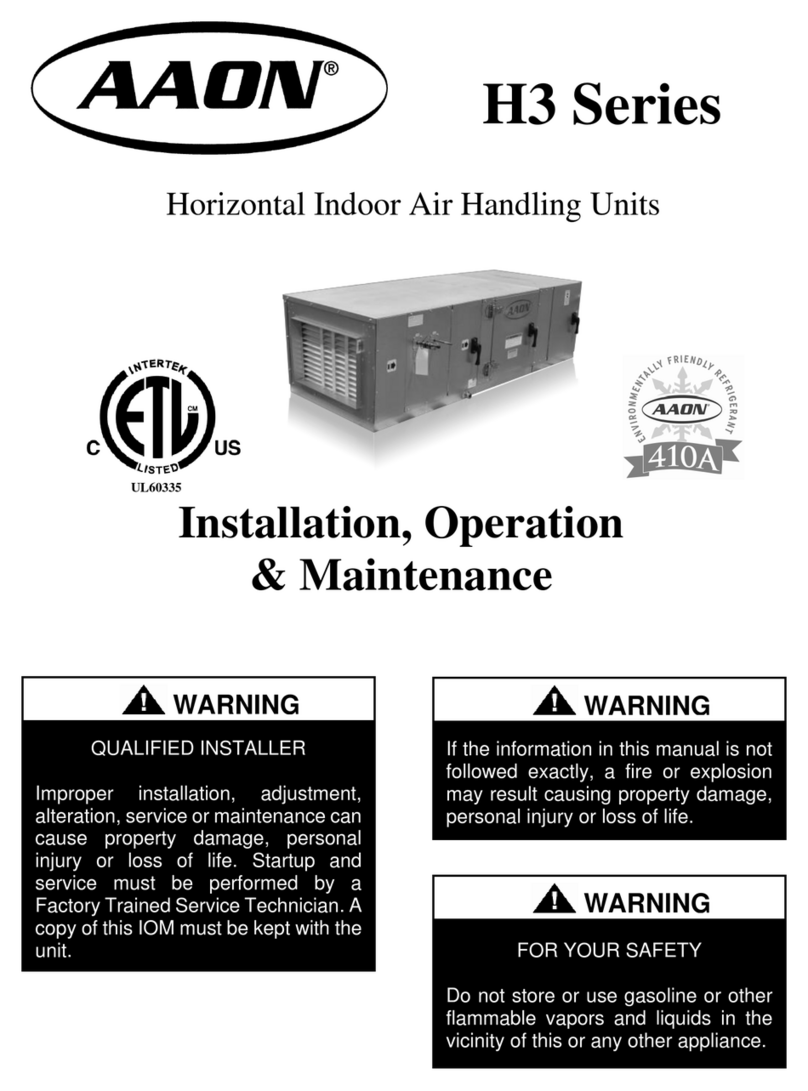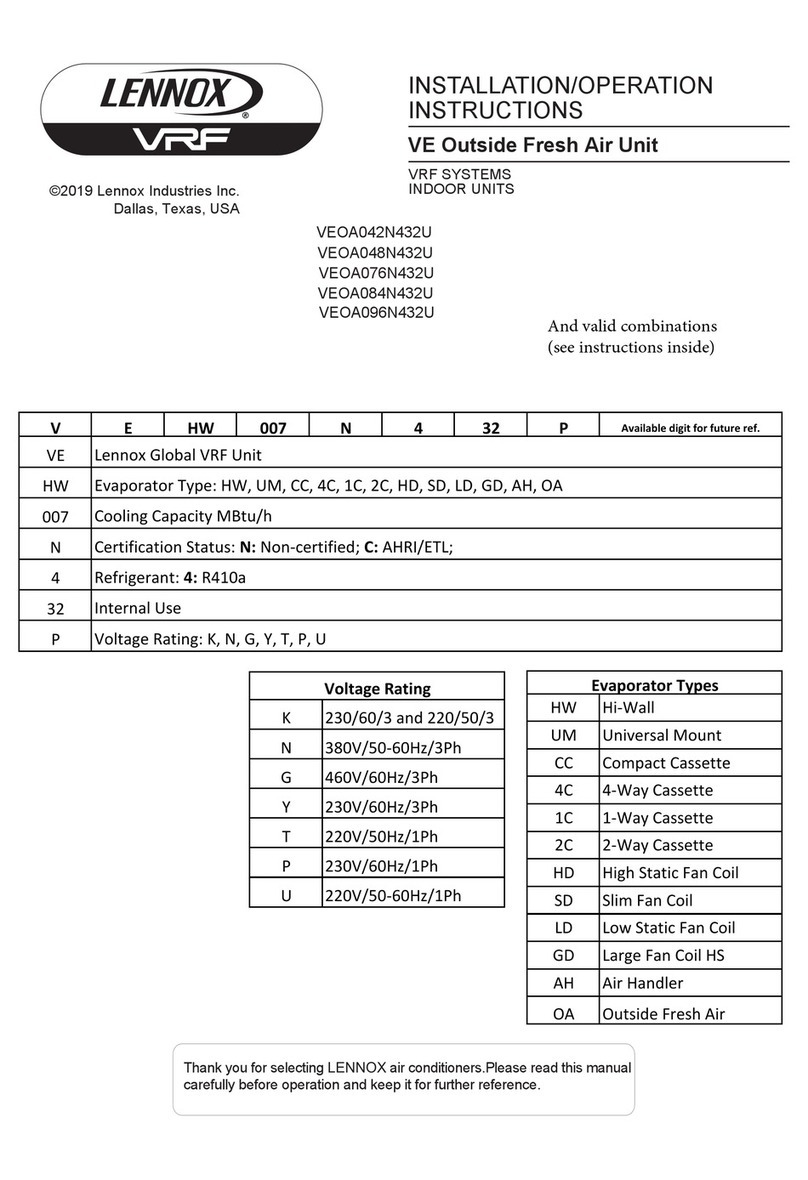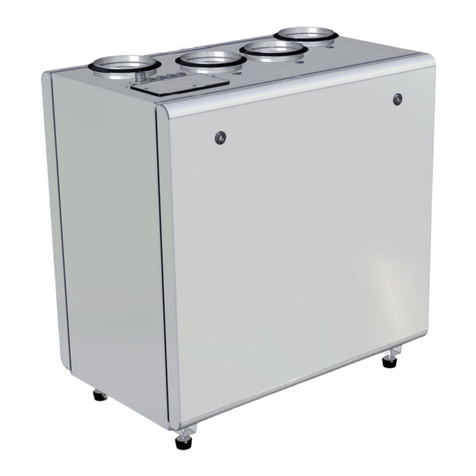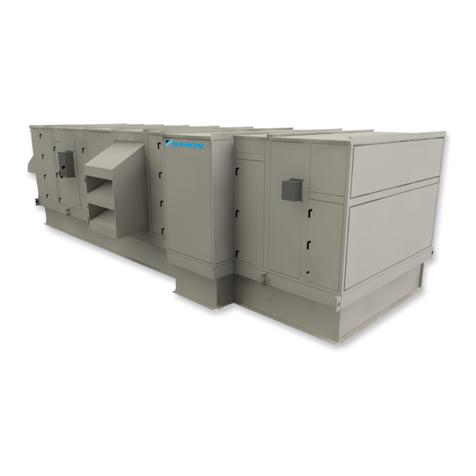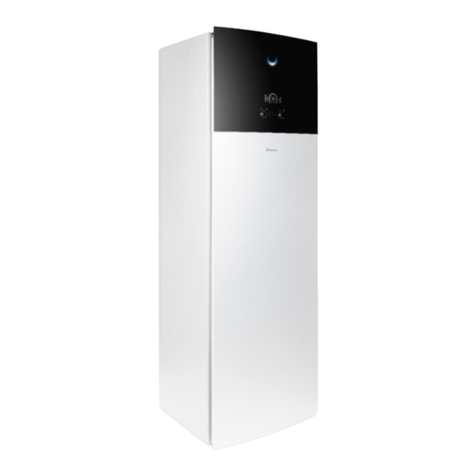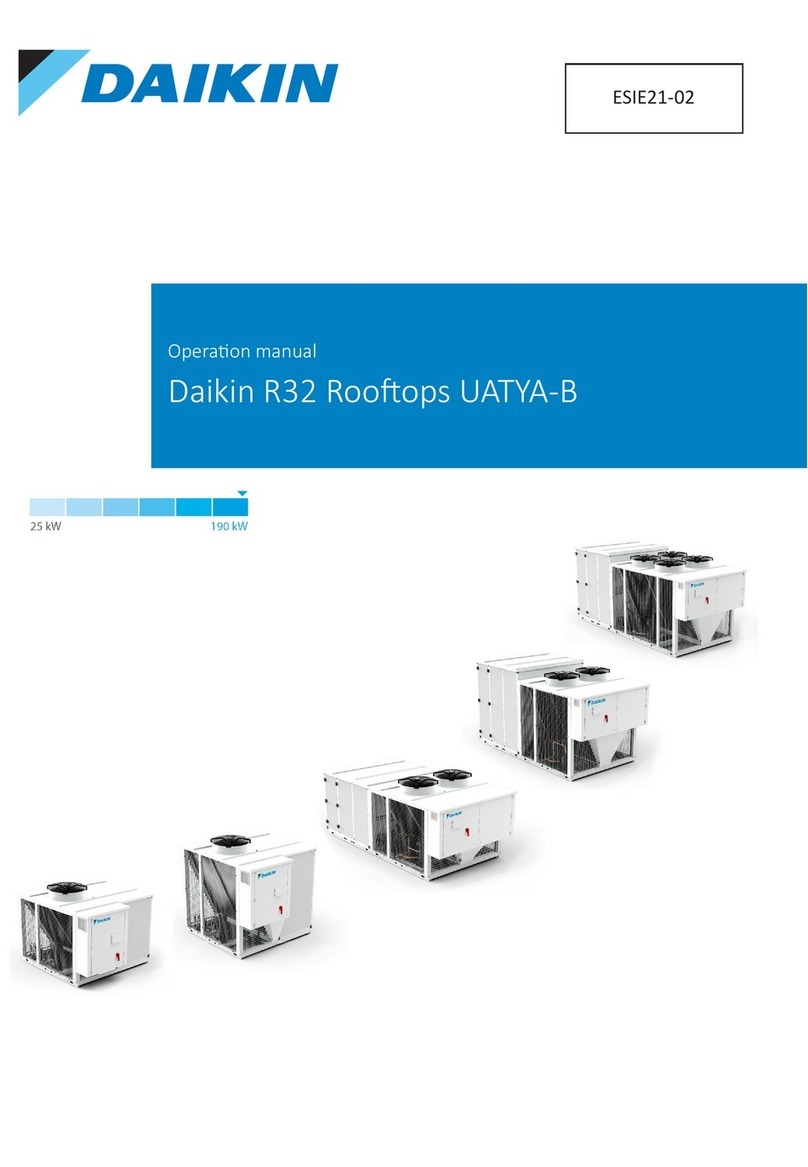
8
3. Replace the refrigerant tubing panel.
4. Remove the spin closure on both the liquid and suction
tubes using a tubing cutter.
5. Insert liquid line set into liquid tube expansion and slide
grommet about 18” away from braze joint.
6. Insert suction line set into suction tube expansion and slide
insulation and grommet about 18” away from braze joint.
7. Braze joints. Quench all brazed joints with water or a wet rag
upon completion of brazing.
NOTE: The sensing bulb must be permanently located. A heat
shield, heat trap, or wet rag must be used during brazing to
prevent damage to the TXV valve.
8. Replace access panels, suction line grommet, insulation and
all screws.
7.4 Thermal Expansion Valve System Adjustment
Run the system at Cooling for 10 minutes until refrigerant
pressures stabilize. Use the followung guidelines and
methods to check unit operation and ensure that the
refrigerant charge is within limits. Charge the unit on low
stage.
1. Purge gauge lines. Connect service gauge manifold to base-
valve service ports.
2. Temporarily install a thermometer on the liquid line at the
liquid line service valve and 4-6’’ from the compressor on
the suction line. Ensure the thermometer makes adequate
contact and is insulated for best possible readings. Use
liquid line temperature to determine subcooling and vapor
temperature to determine superheat.
3. Check subcooling and superheat. Systems with TXV
application should have a subcooling of 7 to 9°F and
superheat of 7 to 9°F
a. If subcooling and superheat are low, adjust TXV to 7 to
9°F, and then check subcooling.
NOTE: To adjust superheat, turn the valve stem clockwise to
increase and counter clockwise to decrease.
b. If subcooling is low and superheat is high, add charge to
raise subcooling to 7 to 9°F, and then check superheat.
c. If subcooling and superheat are high, adjust TXV valve to
7 to 9° superheat, then check subcooling.
d. If subcooling is high and superheat is low, adjust TXV
valve to 7 to 9° superheat and remove charge to lower
the subcooling to 7 to 9°F.
NOTE: Do NOT adjust the charge based on suction pressure
unless there is a gross undercharge.
4. Disconnect manifold set, and installation is complete
NOTE: Check the Schrader ports for leaks and tighten valve cores
if necessary. Install caps nger-tight.
SUBCOOL FORMULA=
SAT. LIQUID LINE TEMP - LIQUID LINE TEMP
SUPERHEAT FORMULA=
SUCT. LINE TEMP - SAT. SUCT. TEMP
RUBBER
GROMMET
SUCTION LINE
WITH SPIN CLOSURE
Suction Line Grommet
Figure 11
8 Condensate Drain Lines
The coil drain pan has a primary and a secondary drain with 3/4”
NPT female connections. The connectors required are 3/4” NPT
male, either PVC or metal pipe, and should be hand tightened to
a torque of no more than 37 in-lbs. to prevent damage to the drain
pan connection. An insertion depth of approximately 3/8” to 1/2”
(3-5 turns) should be expected at this torque.
1. Ensure drain pan hole is not obstructed.
2. To prevent potential sweating and dripping on to nished
space, it may be necessary to insulate the condensate drain
line located inside the building. Use Armaex® or similar
material.
A secondary condensate drain connection has been provided
for areas where the building codes require it. Pitch all drain lines
a minimum of 1/4” per foot to provide free drainage. Provide
required support to the drain line to prevent bowing. If the
secondary drain line is required, run the line separately from the
primary drain and end it where condensate discharge can be
easily seen.
NOTE: Water coming from secondary line means the coil primary
drain is plugged and needs immediate attention.
CAUTION
If secondary drain is not installed, the secondary
access must be plugged.
Insulate drain lines located inside the building or above a nished
living space to prevent sweating. Install a condensate trap to
ensure proper drainage.
NOTE: When units are installed above ceilings, or in other
locations where damage from condensate overow may occur,
it is MANDATORY to install a eld fabricated auxiliary drain pan
under the coil cabinet enclosure.
